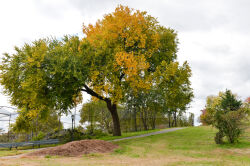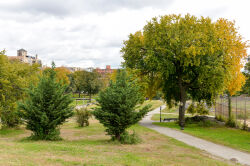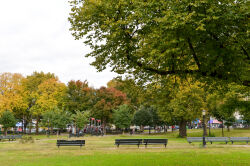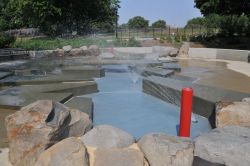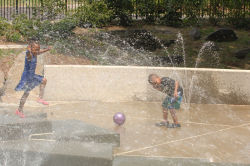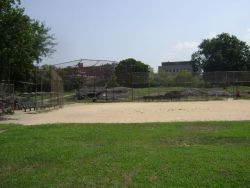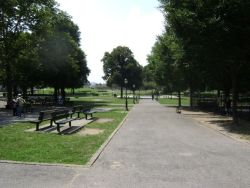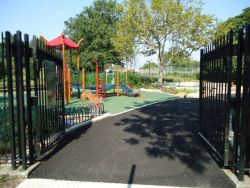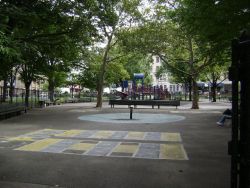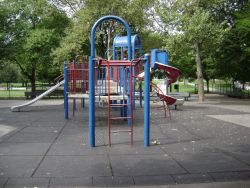Walter Gladwin Park
Walter Gladwin Park
What was here before?
The rolling terrain of Tremont, named for three local hills—Fairmont, Mt. Eden, and Mt. Hope—was once rural countryside and part of Westchester County. Later annexed to New York City, this property was long occupied by old Bronx Borough Hall, an impressive and ornate structure designed by renowned architect George B. Post.
How did this site become a park?
This site was acquired by the City as part of Crotona Park, one of the six original parks in the Bronx established in 1888. Old borough hall was built here in 1897. After World War I an adjacent parcel of Crotona Park was dubbed Victory Park, and a formal garden with paths radiating from a circular fountain embellished Borough Hall’s setting. In 1899, a grand stairway was constructed along the steep slope connecting Borough Hall to bustling Third Avenue.
The new Borough Hall opened in 1935 at the Grand Concourse and 161st Street, and by 1964 the only office left at the old building was the marriage license bureau. Though landmarked in 1965, the building fell into disrepair and was demolished in 1969. The vacated property was landscaped as a passive sitting area with a public restroom, with the historic staircase remaining as the only vestige of its historic past. In 1987, this section of Crotona Park was given an independent identity and name—Highland Park—and after a park renovation, it was renamed Tremont Park in 1999. In 2019, the park was again upgraded.
Who is this park named for?
In 2020, as part of an NYC Parks initiative to expand the representation of African Americans honored in parks, this park was named for Walter H. Gladwin (1902-1988), the first Black elected governmental official in the Bronx. Born in Berbice, Guyana, he moved to the Bronx to live with an uncle after he was orphaned as a teenager. He graduated from City College in 1936 and New York Law School in 1941 and was admitted to the New York State Bar in 1942.
In 1943, Gladwin was appointed Deputy Collector of Internal Revenue for the Third District of New York, and in 1946 Assistant Corporation Counsel for the City of New York. In the 1940s, Gladwin held many community and civic-oriented positions, including the vice-chairmanship of the Bronx Committee of the National Conference of Christians and Jews. Active in the N.A.A.C.P., he also served on the Board of Directors for the Forest Neighborhood Houses, one of the earliest and most ambitious multi-racial public housing projects in The Bronx, and was a founding member of the Bronx branch of the Urban League.
Gladwin became Assistant District Attorney in 1949. In 1953 he won a special election for the Seventh Assembly District, which encompassed the rapidly diversifying neighborhood of Morrisania where he lived and became the first Black assemblyman to represent The Bronx. His legislative priorities included combatting narcotics use among youth, improving housing for low-and middle-income constituents, strengthening civil rights guarantees and enforcement, and advocating for a state-sponsored summer camp program.
After redistricting, Gladwin represented the Sixth Assembly District until 1957, maintaining broad multi-ethnic and racial support among Morrisania’s diverse low-and middle-income inhabitants for his tireless advocacy for measures to improve their lives.
In 1957, Gladwin was appointed Bronx County Civic Magistrate. During his years as a Criminal Court Judge, Gladwin remained highly engaged with the wider Bronx community. He served as president of the Bronx branch of the N.A.A.C.P. and director of the Bronx Chamber of Commerce, and also held the highest position in the Bronx Borough Council of the Boy Scouts of America.
Gladwin retired in 1972 and moved to Highland Mills, New York. He died in 1988 in Goshen, New York.
Check out your park's Vital Signs
Clean & Safe
Green & Resilient
Empowered & Engaged Users
Share your feedback or learn more about how this park is part of a
Vital Park System

